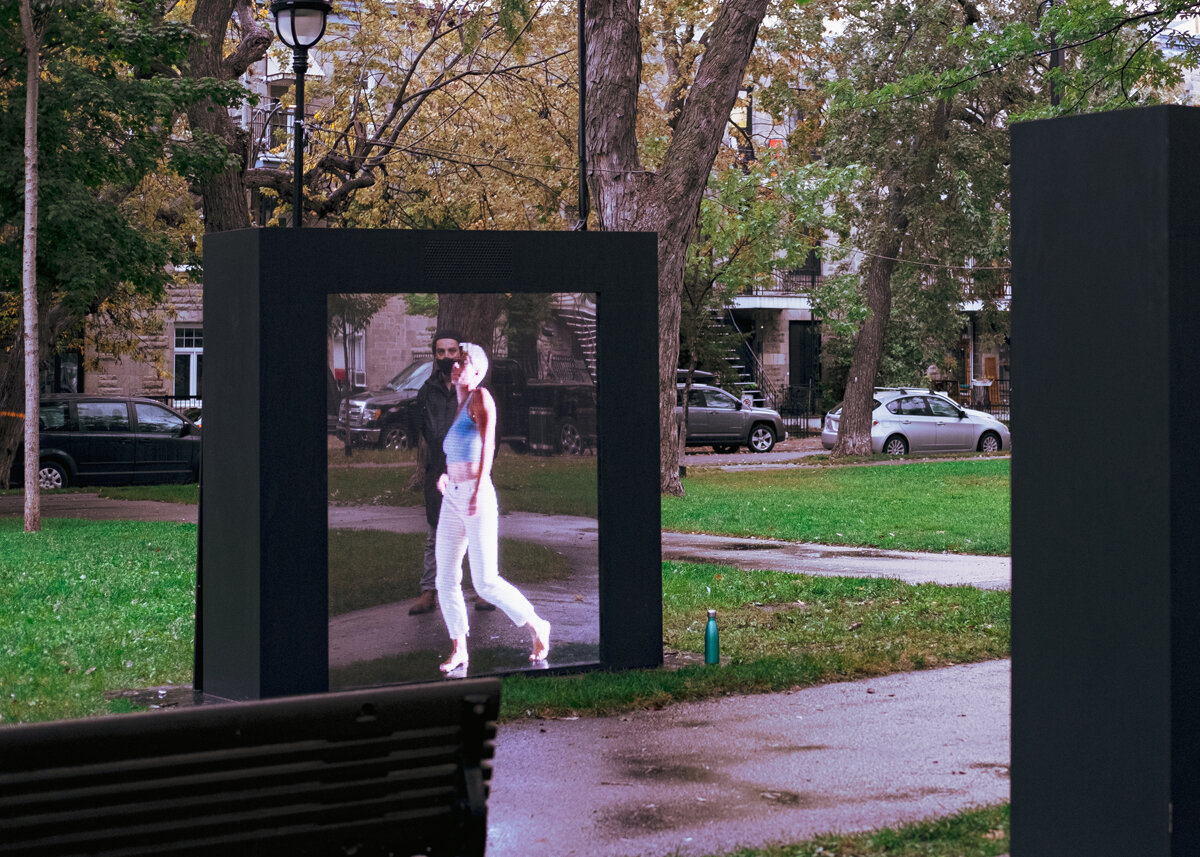The Show Must Go On!
PHOTO HUB STUDIO
PHOTO HUB STUDIO
With so many cities and towns in a state of lockdown due to the COVID-19 pandemic, artists of all types are feeling the emotional and financial weight of not being able to perform at festivals, events, venues, and on tours and stages around the globe. Just imagine what this means for a city like Montréal, a mecca for arts, music, dance, and cultural festivals, and not to mention the birthplace of Cirque du Soleil, the Jazz Fest, Ballet Jazz de Montréal (BJM), les 7 Doigts de la Main, and Cirque Éloize (just to name a few). My heart skipped a beat back in March when I read that 95% of the Cirque du Soleil artists, creators, and staff would no longer be coming back to work the following week, as the company had to cancel their productions and performances due to the pandemic. Several musicians and performers have also had to cancel live performances and productions that were in the works for many months and even years.
Spectators with an insatiable appetite for music, dance, and artistic performances are also craving the return of artists back to public venues and live stages. A Montréal without its creative industries in full swing is a bit like popcorn with no salt or butter – it's still edible, but it lacks some serious flavour. The cultural and creative industries give Montréal its unique "je ne sais quoi" and serve as key ingredients in the special sauce that makes Montréal…well, Montréal.
I'm not writing this article to shed a spotlight on the infamous duet of Monsieur Doom and Madame Gloom. Oh contraire! From adversity and obstacles also spring creativity and innovation. And on this note, I wanted to highlight a creative project that also pivots (literally) around the concept of a duet. The project, entitled Duo, is an artistic installation, which I loved for its artistic integrity and innovative use of technology. In fact, it's projects like these that make me proud of our artistic and creative community here in our Québec metropolis.
PHOTO HUB STUDIO
PHOTO HUB STUDIO
Duo is a multidisciplinary work that was brought to life through the collaboration of the choreographer Virginie Brunelle, 2 dancers (Sophie Breton and Milan Panet-Gigon), the multimedia creative studio Hub Studio, and the musicians Dear Criminals. The project was created as a result of an initiative led by the City of Montréal in order to enhance public space and promote active transport during the COVID-19 pandemic.
On June 25, 2020, the City of Montréal had put out a call for projects inviting professionals from the cultural communities and digital creative industries to join forces and submit proposals for the creation and deployment of temporary installations in or near active transport routes in the city (referred to in French as “Voies actives sécuritaires” or VAS). The VAS are a network of bike lanes, pedestrian corridors, and pedestrian streets that weave their way through several neighbourhoods. These active transport circuits were designed to allow pedestrians and cyclists to travel to parks, schools, essential services, and businesses while complying with public health regulations and social distancing measures. The entire network linked together large parks, commercial streets, commercial zones, cultural zones, and residential areas.
The projects chosen for this call for proposals had to clearly demonstrate a partnership between digital creative businesses and the arts and culture community (visual arts, performing arts, film and television, crafts, heritage-related artistic content, multimedia, literature, cultural mediation, etc.). Furthermore, the selected projects had to be produced and installed in just four weeks. Duo was among the 10 temporary installations chosen, and was created in August and deployed in October in the Square Sir-George-Étienne-Cartier park in St. Henri, a district in Montréal.
Duo explored the limitations resulting from the social distancing rules imposed during this COVID-19 pandemic. The piece illustrated the impossible encounter between two contemporary dancers who appeared to be face-to-face, yet each performer was trapped inside a screen and danced a solo in his and her respective digital bubble. The large LED digital screens were placed on either side of a walkway in the park, which put the spectator right in the middle of the interaction between the two dancers. A mirror was inserted inside the digital screens to hide some of the more mechanical aspects of the technology and to allow viewers to see their own reflections inserted into this digital pas de deux.
"When we saw the call for projects, we felt it was the perfect opportunity to continue to allow dancers to perform in public space. We also viewed the piece as a way to use technology as a vehicle to make a duet possible during the pandemic," explained Thomas Payette, Co-founder and Creative Director at Hub Studio. After being granted the contract, the Hub Studio creative team received a list from the City of possible sites where the project could be brought to life. The team spent time visiting and observing each potential site and was quickly convinced that Square Sir-George-Étienne-Cartier park was the perfect location. "We were drawn to the fact that the park is located in a very residential neighbourhood of Montréal and not downtown where one may expect to find this type of installation. We also really appreciated the incredible diversity of the mix of people who visit the park since we were specifically interested in making art and contemporary dance accessible to a wider audience."
Since so much of Virginie Brunelle's work is about physical contact and proximity, it was an excellent challenge for her to choreograph a duet where the dancers couldn't physically touch or connect. I spoke with Virginie about the project and also asked her what it was like to create a piece that would be experienced in public space as opposed to in a theatre or dance venue. "It was enriching to create a piece that could be accessible to such a wide audience. It was also a nice challenge to work within the technical constraints imposed by the size and position of the two digital screens. For example, it meant that each solo performance had to be choreographed within a 5' x 6' space and some spectators would physically be positioned right in the middle of the two performers. So, the spectators served as a sort of connection between the duo."
The dance performance lasted six and a half minutes and was looped continuously from 9AM-11PM every day. Therefore, it was no small task to find music that would work well with the choreography, be appropriate for a park setting, accessible to a wide audience, and enjoyable to listen to over and over. After much research, the creative team landed on a song from the local popular band Dear Criminals. Thomas emphasized that it was particularly import for them to collaborate with local Québec artists and also use a soundtrack that would enhance the public space and not detract from it. One speaker was positioned in the middle of each screen and therefore, the sound was mostly contained within the area between the two screens and near the installation. An interesting aspect to highlight is that the sound and lighting was also automatically adjusted for the time of day. For example, at night, the soundtrack was automatically played at a lower decibel level than during the day, and the lighting was also automatically adjusted to account for daylight and evening conditions.
The temporary installation was originally scheduled to stay in the park in St. Henri until the end of October, but the reception from local residents and park visitors was so positive that the district decided to keep the installation up and running until the end of November.
Artistic installations have amazing potential to make art more accessible to a wider audience, enhance public spaces, and improve the quality of life in our neighbourhoods and cities. Furthermore, installing creative projects in local neighbourhoods entices people to spend more time discovering their own neighbourhoods and encourages interaction between local residents. It also incentivizes people from other districts to discover new neighbourhoods.
The project Duo illustrates that a pinch of multidisciplinary collaboration along with a dash of innovative technology makes for powerful ingredients as we experiment with various recipes for improving our urban environments.
Complete credits:
Creative Director: Thomas Payette (HUB Studio)
Choreography: Virginie Brunelle (Compagnie Virginie Brunelle)
Dancers: Sophie Breton and Milan Panet-Gigon
Scenographer: Xavier Mary (HUB Studio)
Multimedia Director and designer: Antonin Gougeon Moisan (HUB Studio) Technical Director: Jean-François Piché
Visual Content direction: HUB Studio
Music: Dear Criminals (Track: Cold Wave)
Production: HUB Studio
Construction: Gauvin Fabrique




